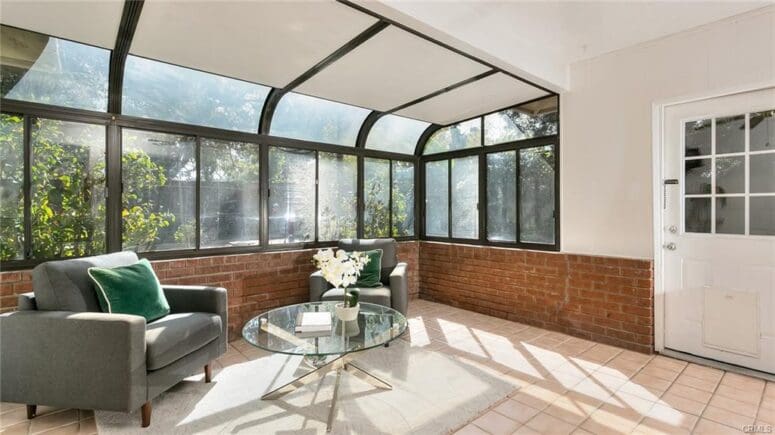Pause the FSBO Post! Your Home Deserves a Better Listing Than That
- Published on
- 4 min read
-
 Catrina Sun-Tan Contributing AuthorClose
Catrina Sun-Tan Contributing AuthorClose Catrina Sun-Tan Contributing Author
Catrina Sun-Tan Contributing AuthorCatrina is a native San Franciscan with a B.A. in Psychology and minor in Cinema and Media Studies from Wellesley College. A storyteller at heart, she loves to write about people, films, and of course, real estate. Don't be surprised if you catch her browsing luxury homes on Instagram or obsessing over the latest market trends.
Scroll the FSBO section on any of the top real estate listing websites and see how long it takes you to find the following:
- Exterior shot that makes the house look slanted
- All caps in the property description
- Big red ‘price cut!’ label
- 90+ days on market
Back already?
The point is, online listings form a buyer’s first impression of your property. You could snap a few photos with your phone, fill out the fields on price, beds, and baths, and viola, you’ve got a home listing you can technically post around the web.
But will it stand out against the thousands of other listings created by professionals that go live every day—in a good way, not a can’t-look-away train wreck way?
Time to rethink your plan to post that DIY listing to the first site that pops up when you type in “list home for sale,” find out if you could be making any of these rookie mistakes, and see if you can call in reinforcements (like a top local agent in your area).
1. Overshooting the price
According to research from the National Association of Realtors, the most difficult part of the home selling process for FSBO sellers is getting the price right. And other than your main curb appeal photo, the price of your home will be the single most prominently displayed feature of your online listing (take a quick scan and you’ll see that websites typically put the price in a larger font than the address, bed/bath count, and square footage).
“Agents know the market and they know what houses are selling for,” says James Carswell, a top performing real estate agent in the Atlanta, Georgia, area. “I see a lot of mistakes with sellers trying to get more than what the property is actually worth.”
Without the objective lens and comparative market analysis a real estate agent can provide, sellers risk getting blinded by their sentimental ties to a property and overpricing it as a result.
From there it’s a slippery slope.
Historically homes priced above fair market value sit on the market longer, go through a price reduction or two, and then end up selling for less than if you’d priced it right from the start.
Unfortunately any price reductions you make will likely be out there for the world to see in your listing’s “home price history” section, causing buyers to wonder what’s wrong with it and why it hasn’t sold yet.

2. Inaccurate number of bedrooms
The legal definition of a bedroom is not as simple as a space where someone could sleep in your house if you put a futon in there. Yet home sellers innately want to list their homes with the maximum number of bedrooms to increase their home’s value and marketability.
Carswell often sees this issue in the DIY listings he comes across.
“I’ll look at the details of the home, and the descriptions are just wrong,” says Cardswell.
“I’ve seen some listings the homeowner states that the house is a two bedroom. They have a bonus room that they’re trying to call a bedroom. There’s no closet, there may not be any ventilation or a homeowner may have closed in the garage and try to call it a bedroom. There’s no bathroom in that area of the house. So you can’t consider it a bedroom.”
Any kind of misrepresentation of bedrooms that may not be up to code could actually put you in legal hot water with the buyer of your house. Imagine your buyer sets out to sell the house down the road only to realize they’ll have to drop their price over a bedroom you led them to believe was legitimate.
The legal requirements for bedrooms vary from state to state, but according to top performing New England real estate agent Bill Gassett, to be considered a bedroom, a space must have:
- A minimum of 70-80 square feet
- Two ways to exit (one being the door, the second being an alternative egress with a minimum opening of 5.7 square feet)
- Enough space to comfortably stand
- Temperature control
3. Salesly language in the description
From cooking supplies to IKEA furniture, product descriptions explain in greater detail what you see in the product photographs. This same rule applies to home listings—the description gives you another opportunity to persuade the buyer to visit your house in person. But it shouldn’t inundate readers with in-your-face salesy language like “ACT FAST!” or “HURRY, CALL NOW!”
Instead you want to tell a story, paint a picture.
“I have a conversation with the seller to see what they’ve done to the property, like if there are certain features about the property that they think should be highlighted,” explains Cardswell. “I try to let the homeowner tell me as much as possible about the home.”
Then, he decides what is most useful and worthy to keep in the description that would make buyers want to drop everything and book a tour.
Experienced agents have written hundreds of descriptions and know how to present property information in a compelling and authentic way.
Debra Oman, who is in the top 1% of real estate agents in Springfield, Missouri, also captures the location and environment of a listing in this description:
A large pond sits below the house where you can swim or fish or just soak up the view. Wander through the 15-acre Walnut Grove, precisely planted and pruned. Ride your horse along the multitude of trails.
Hike among the woodlands and across Peter’s Branch Creek. Discover nature’s surprises, including caves, mushrooms, and wildlife. Enjoy the timber improvements and glade restoration as a nationally recognized Tree Farm. Access is directly off of a well-maintained State Highway, but sits into the woods far enough to provide the privacy and tranquility that only nature can offer.
Nature lovers will be immediately drawn to this listing just by the details Oman provided about the location, including easy access to the highway and a forest getaway from the city.

4. No image captions
If a picture’s worth a 1,000 words, why would anyone need captions?
When it comes to real estate listings, captions on your photos can be an opportunity to highlight features in a room that 1) a buyer wouldn’t be able to see by just browsing through your photo carousel and 2) are too minute to fit into the listing description (where you only get about 50-100 words to describe the whole house).
Not convinced it would make a difference?
Take this sold listing put together by Angelina Keck, a top agent in Houston, Texas, who sells 70% more properties than the average agent in her area. Every single photo is accompanied by a caption that shares additional gems of information for the buyer.
A few examples:
- Living room
Handsome living area charms with dual sided fireplace and streamlined built-ins. Ethernet cables throughout for smart home capability. Surround sound installed for your media enjoyment.
- Dining room
Spacious formal dining accommodates all of your family and guests with wine room to keep your preferred beverages close at hand. Butler’s pantry and kitchen access through far door.
- Entryway
Entry welcomes with dramatic front staircase and recently updated doors and windows.
With each caption, Keck finds ways to sneak in extra bonus points for the house with mentions of updates and features the photos alone wouldn’t show.

5. DIY photos
“One of the first things people notice is the pictures. Before they even get to the description, they’re looking at the photos,” says Cardswell.
VHT Studios, one of the largest real estate photography companies in the U.S., found that when homes were professionally photographed, they sold 32% faster than homes that weren’t. Listings that had better photos flew off the market, cutting its average days on market by 5 weeks!
Here’s a listing from Bradley Korb, who’s in the top 1% of agents in Los Angeles, CA, that demonstrates how well professional photographers can capture the best features of your home.
The natural light entering from the windows and angle of the perspective gives depth to the room, making it feel spacious and homey.
These listing photos look like they were taken right out of Architectural Digest Magazine, which should be the standard for how you’ll market your home.
It’s time to retire your 2009 flip phone. Listings with professional photos are now an industry standard. You wouldn’t want to stick out like a sore thumb with a blurry picture of the hallway and your reflection in the bathroom mirror.
Cardswell has a professional photographer ready at a moment’s notice for his sellers.
“You can tell the difference between a picture with a cell phone and the picture that’s been done by a professional,” he notes. They help make the listing look cleaner and crisper, which attracts the attention of buyers right off the bat.
List your home for sale like a pro, not an amateur
You’ve heard the risks of going FSBO: selling your house for less than it’s worth, mounds of paperwork, and time lost to handling communications and showings.
But the challenges actually begin the moment you go to list your home for sale online. 93% of buyers use the internet as a key source of information in their house hunt, and a listing that looks thrown together conveys that you’ve not taken care with this initial step in the process.
Why should buyers believe the rest of the transaction will be any different?
If you need help, HomeLight can connect you with a top performing agent in your area who knows how to make your real estate listing sing.
Header Image Source: (TierneyMJ/ Shutterstock)


